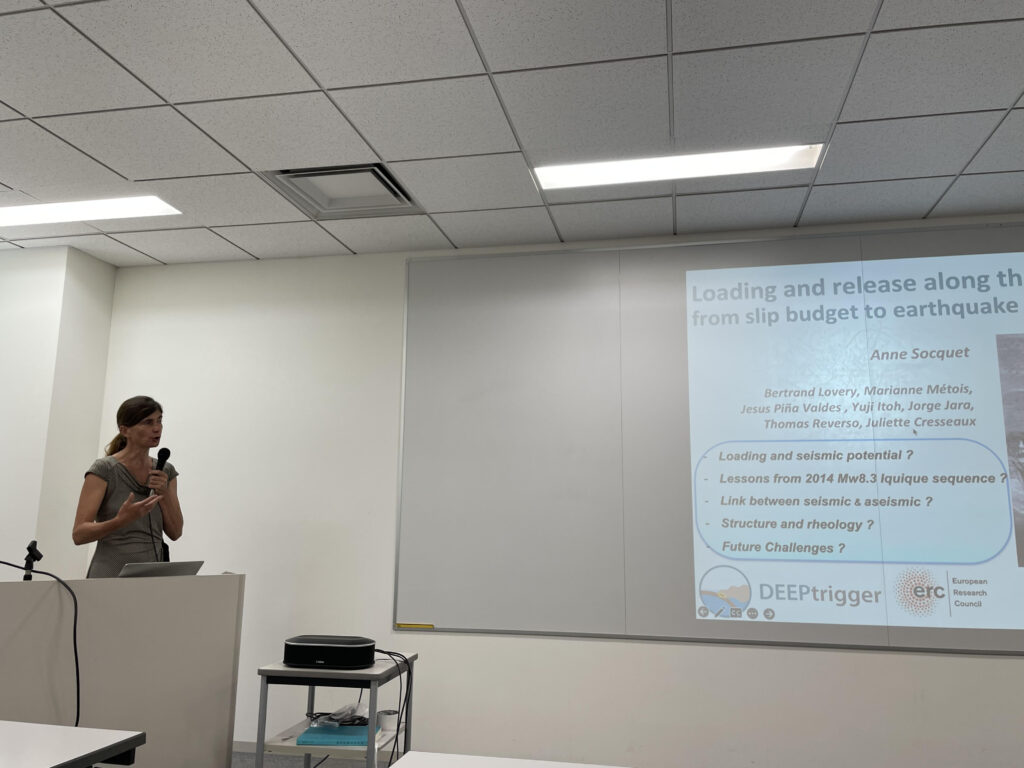Anne Socquetさん(ISTerre,Grenoble-Alpes University, France)によるスペシャルセミナーを開催しました
スペシャルセミナーを開催しました。
| 日時 | 2023年9月12日(火) 11:00~12:00 |
| 会場 | 東京大学 地震研究所1号館 2階セミナー室 / オンライン |
| 講演者 | Anne Socquet (ISTerre,Grenoble-Alpes University, France) |
| タイトル | Loading and release along the central Andes subduction : from slip budget to earthquake nucleation, rupture and induced relaxation |
| 要旨 | In this talk I will present a synthesis of the analysis of the deformation field in the Central Andes (12 to 24°S) as constrained by GNSS and InSAR, and interpret it in terms of buildup and release of elastic strain along the subduction megathrust. 15 years of GNSS observations in Chile and Peru are used to constrain the interseismic defiormation field. The interseismic loading shows an along strike segmentation that can be compared with the seismic segmentation. Considering uncertainties on the data and models, we discuss the implication of our coupling estimates with the size and timing of large megathrust earthquakes. We then investigate the link between seismic and aseismic slip. We perform a systematic search for small slow slip event using a template matching method. We find 33 SSEs with durations from 9 to 40 days and magnitudes from Mw~5.6 to 6.2. The majority of SSEs occur in regions of intermediate geodetic coupling or where plate-geometrical complexities are observed. We then focus on the seismic and aseismic processes that occurred before and during the 2014 M8.3 Iquique sequence. We find that an 8-month mostly aseismic slow slip event preceded the main shock, that was followed by a series of foreshocks eventually leading to the main rupture. We also investigate the details of the early afterslip and the processes leading to the largest Mw7.6 aftershock that appears to be preceded by an increase in seismicity driven by the afterslip. The post-seismic relaxation following the 2014 Iquique earthquake is then studied and modelled using a finite element framework with a realistic geometry and a visco-elastic rheology. The temporal evolution of the post-seismic deformation constrains the amount of afterslip versus viscoelastic relaxation, as well as the geometry and the rheology of the mantle wedge. A weak body is needed below the Altiplano with a Burgers rheology and a Kelvin viscosity of 10^18Pa.s. |

